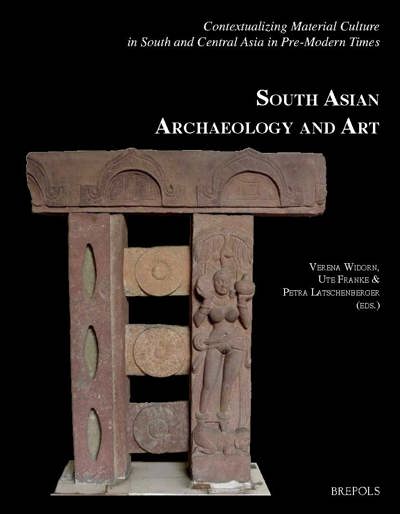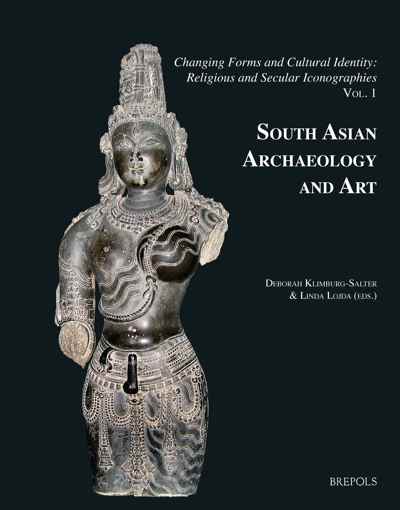
Changing Forms and Cultural Identity: Religious and Secular Iconographies
Deborah Klimburg-Salter, Linda Lojda (eds)
- Pages: 243 p.
- Size:220 x 280 mm
- Illustrations:300 b/w, 13 col.
- Language(s):English
- Publication Year:2015
- € 150,00 EXCL. VAT RETAIL PRICE
- ISBN: 978-2-503-55243-9
- Paperback
- Available
These contributions represent the most innovative trends in the contemporary study of Art and Archaeology of South Asia. Based on ongoing field research, each study identifies a single distinctive visual theme in order to illuminate the regional culture in interplay with a broader pan-Indian cultural heritage. Contemporary South Asian studies exploit a wide variety of methodological tools, which permit the exploration of more diverse questions. Philological, archaeological, art historical and anthropological evidence contextualize cultural artefacts in many media from terracotta figures to monumental architectural complexes. The artefacts date from the beginning of the historical up to the modern period and derive from across the Indic cultural zone — from Central Asia and the Himalayas to the Subcontinent as far as South India and Bangladesh. Thus, one can appreciate the stunning diversity of regional, thematic, iconographic, and aesthetic expressions within the vast panorama of South Asian visual culture. Senior scholars from more than a dozen countries of Europe and Asia bring a sophisticated understanding of the broader issues against which their thematic studies must be considered. Each article is extensively illustrated, many images deriving from the scholars' own fieldwork, and each study concludes with a short but authoritative bibliography providing avenues for future research.
Deborah Klimburg-Salter, Preface Vol I
Deborah Klimburg-Salter, Introduction
Chandreyi Basu, Elephant Goads and Other Marks on Female Figures in Bhārhut
Marion Frenger, A Terracotta Relief from Ahicchattrā – Sun Barque, Solar Chariot or ...?
Kurt A. Behrendt, Maitreya and the Past Buddhas: Interactions between Gandhāra and Northern India
Katia Juhel, On the Necessity of Contextualisation: a Nagaradevatā and other Semi-nude Women in Gandhāran Representations of the Buddha's Life
Carolyn Woodford Schmidt, Ongoing Studies of Bodhisattva Imagery from Greater Gandhāra: Turban Ornamentation in the Form of Winged-Lion Plaques
Kirsten Southworth, Skanda in Gandhāra: A Hindu God in a Buddhist Environment?
Monika Zin, Non-Buddhist Narrative Scenes at Nagarjunakonda
Pia Brancaccio, Aṣṭamahābhaya Avalokiteśvara in the Western Deccan: Buddhist Patronage and Trade between the fifth and sixth century CE
Adam Hardy, Designing a New Hoysaḷa Temple in Karnataka
Gouriswar Bhattacharya, A Magnificent Gupta Terracotta Vāsudeva-Viṣṇu Image from the David Nalin Collection
Vincent Lefèvre, The Hindu Sculptures from Pāhārpur Reconsidered
Eva Allinger, Ten Illustrated Leaves from a Pañcarakṣā Manuscript in a Private European Collection
Perween Hasan, Architecture as Identity: Architecture of the Bengal Sultanate
Gerd J.R. Mevissen, Images of Ardhanārīśvara from Bengal and Nepal – A Chronological Survey
Helmut F. Neumann and Heidi A. Neumann, Thirteenth and Fourteenth Century Wall Paintings in West Tibetan Caves: Style and Iconography
Anne-Claire Juramie, The Magru Mahādeva Temple at Chhatri (distr. Mandi, Himachal Pradesh): Architectural and Iconographical Observations
Erika Forte, On a Wall Painting from Toplukdong Site no. 1 in Domoko: New Evidence of Vaiśravaṇa in Khotan?
Ciro Lo Muzio, New Evidence on Sogdian Painting from Uch Kulakh (Bukhara Oasis – Uzbekistan)
Plates

